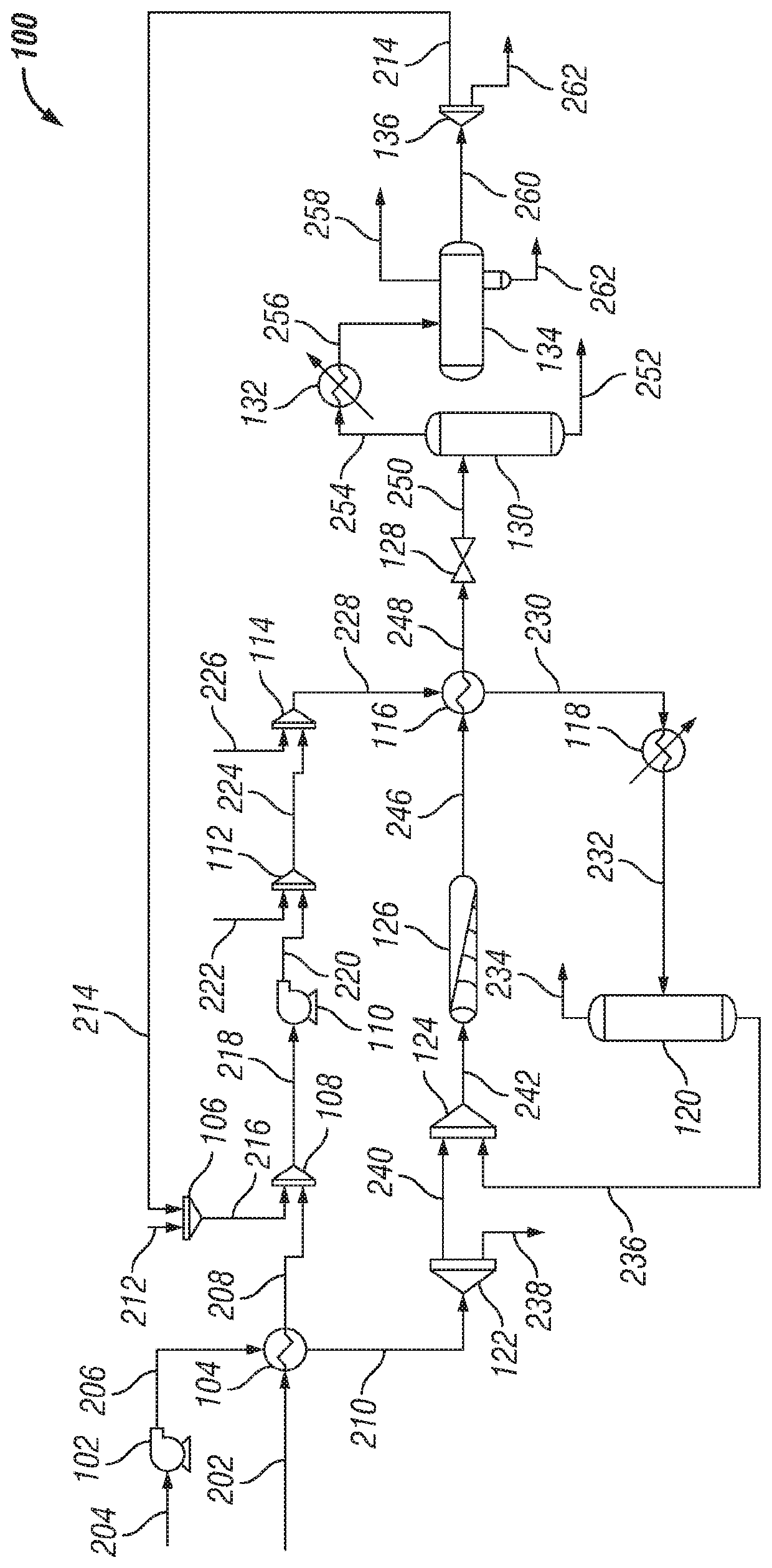Catalyst and process of upgrading heavy oil in the presence of steam
a technology of heavy oil and catalyst, which is applied in the field of hydrocarbon processing, can solve the problems of reducing the efficiency of cracking and upgrading heavy hydrocarbon residua, affecting the efficiency of hydrocarbon oil refining, etc., so as to facilitate the addition of hydrogen and oxygen radicals, reduce asphaltenes, and reduce water dissociation.
- Summary
- Abstract
- Description
- Claims
- Application Information
AI Technical Summary
Benefits of technology
Problems solved by technology
Method used
Image
Examples
example
[0092]The disclosure is illustrated by the following example, which is presented for illustrative purposes only, and is not intended as limiting the scope of the invention which is defined by the appended claims.
[0093]An aqueous reforming system having a configuration similar to FIGURE was modelled using the HYSYS Hydroprocessing Model (Aspen Technology, Inc., Bedford, Mass.). In reference to the properties of the streams for EXAMPLE, the description and stream numbers for FIG. 1s used.
[0094]A heavy hydrocarbon (stream 202) was introduced into the respective system at a mass flow rate of about 135,100 kg / hr. A surfactant composition (stream 212) was introduced into the respective system at a mass flow rate of about 41 kg / hr. The surfactant composition included paraffinic, naphthenic, and aromatic compounds functionalized with carboxylic acid groups. The surfactant composition included between about 15 wt. % and about 20 wt. % aromatic carboxylic acids. The surfactant composition inc...
PUM
 Login to View More
Login to View More Abstract
Description
Claims
Application Information
 Login to View More
Login to View More - R&D
- Intellectual Property
- Life Sciences
- Materials
- Tech Scout
- Unparalleled Data Quality
- Higher Quality Content
- 60% Fewer Hallucinations
Browse by: Latest US Patents, China's latest patents, Technical Efficacy Thesaurus, Application Domain, Technology Topic, Popular Technical Reports.
© 2025 PatSnap. All rights reserved.Legal|Privacy policy|Modern Slavery Act Transparency Statement|Sitemap|About US| Contact US: help@patsnap.com

